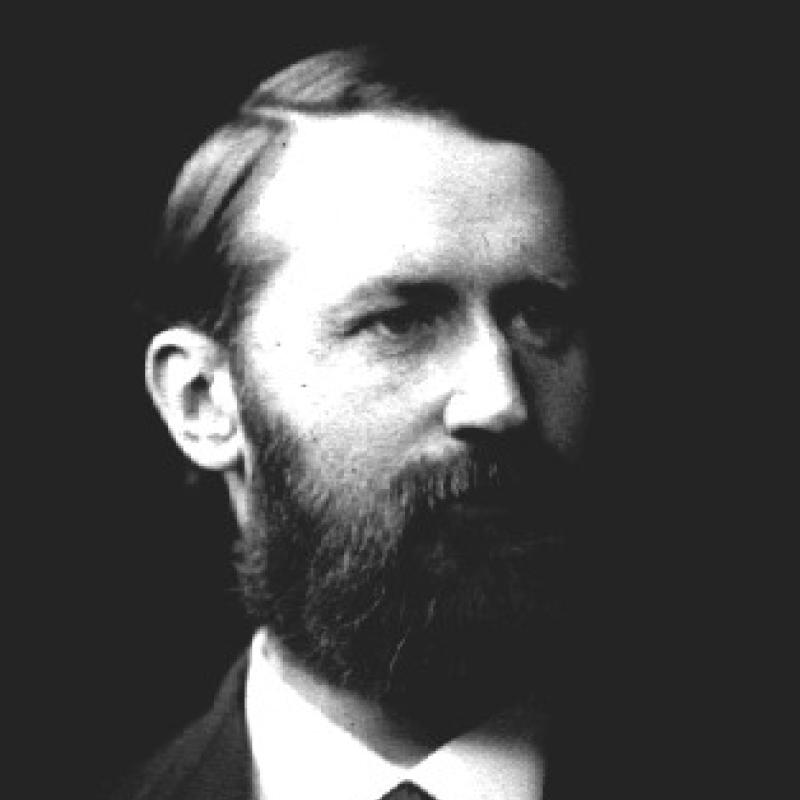Georg Friedrich Julius Arthur von Auwers

1899 Bruce Medalist
Date of Birth:
Date of Death:
Born and educated in Göttingen, Arthur Auwers began his career at Königsberg, Germany [now Kaliningrad, Russia], where he learned to use the heliometer and earned his doctorate. He served as secretary of the Berlin Academy from 1866 to 1915. During this period he made trips to Patagonia to observe the transit of Venus and to the Cape of Good Hope to assist with the observations of David Gill. Auwers’s life work was making extremely precise catalogs of stellar positions and motions. He made completely new reductions of James Bradley’s 18th century Greenwich observations and began a project of unifying all of the world’s catalogs from 1750 on, a task not completed until 1966. He computed the orbits of the Sirius and Procyon systems before the faint companions to the bright stars were seen, and he redetermined the distance to the sun several times, making use of transits of Venus and an approach of a minor planet. Not averse to the new astronomy, he helped found the Potsdam Astrophysical Observatory.
Presentation of Bruce medal
Aitken, R. G., PASP 11, 61-70 (1899).
Other awards
Government of Germany, Order Pour le Merite for Arts and Sciences, 1892.
National Academy of Sciences, James Craig Watson Medal, 1891.
Royal Astronomical Society, Gold medal, 1888, presented by J.W.L. Glaisher, MNRAS 48, 236-51 (1888).
Royal Prussian Academy of Sciences, Bradley Medal, 1913.
Some offices held
Astronomische Gesellschaft, President, 1881-88.
Biographical materials
Oliveira, Ednilson, Biographical Encyclopedia of Astronomers (Springer, NY, 2007), pp. 71-72.
Plicht, Chris, Auwers, Arthur
Sticker, Bernhard, Dictionary of Scientific Biography 1, 339-40.
Tenn, Joseph S., “Arthur Auwers: The Second Bruce Medalist,” Mercury 19, 2, 49 (1990).
Wempe, J., “Arthur Auwers als Astronom der Berliner Akademie,” Sternzeiten 2, 17-28 (1977).
Zinner, Ernst, Neuen Deutschen Biographie, 1, pp. 462-63 [in German].
Obituaries
Aitken, R.G., Science 41, 495-97 (1915).
Dyson, F.W., Observatory 38, 177-81 (1915).
E[ddington], A.S., MNRAS 76, 284-89 (1916).
Seeliger, H., Astr. Nach. 200, 185-90 (1915) [in German].
Portraits
Steinicke, Wolfgang
Gallica: 1884 photo by Theodore Prumm
Named after him
Lunar crater Auwers
Minor Planet #11760 Auwers
Bibliography
Papers, etc.
Auwers’s papers are at the Archiv der Berlin-Brandenburgische Akademie der Wissenschaften.
Other References: Historical
Search ADS for works about Auwers
A Brief History of Astronomy in Berlin and the Wilhelm-Foerster-Observatory
Anonymous, “Centenary of Arthur Auwers, For.Mem.R.S.,” Nature 142, 467 (1938).
Kipff, August, Die Revision des Neuen Fundamentalkatalogs von Auwers (Tip. “Vostok,” Kazan, 1927).
Other References: Scientific
Search ADS for works by Arthur Auwers
Auwers, Arthur & James Bradley, Neue Reduction der Bradley’schen Beobachtungen aus den Jahren 1750 bis 1762 (Commissionare der K. Akademie der Wissenschaften, St. Petersburg, 1882-88).
Auwers, A., “Some Remarks on the Chain of Meridian Distances Measured around the Earth, by H.M.S. ‘Beagle,’ between the years 1831 and 1836,” MNRAS 44, 303-46 (1884).
Auwers, A., “A Catalogue of 480 Stars to be Used as Fundamental Stars for Observations of Zones between 20° and 80° South Declination,” MNRAS 47, 455-73 (1887).
Auwers, A., Catalog von 9789 Sternen zwischen 1450 und 2010 nördlicher Declination 1855 und Catalog von 372 Grösstentheils der nördlichen Berliner Zone angehörigen Sternen für das Aequinoctium 1875 nach Zonen-Beobachtungen am Pistor’schen Meridiankreise der Königlichen Sternwarte zu Berlin in den jahren 1869 bis 1874 (Astronomischen Gesellschaft in Commission bei Wilhelm Engelmann, Leipzig, 1896).
Gill, David, Georg Friedrich Julius Arthur Auwers, William Lewis Elkin & Harold Jacoby, A Determination of the Solar Parallax and Mass of the Moon (Darling & Son, London, 1897).

